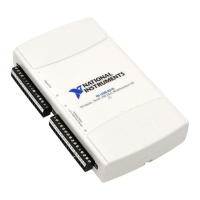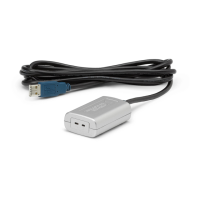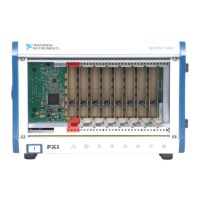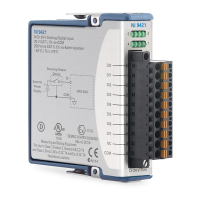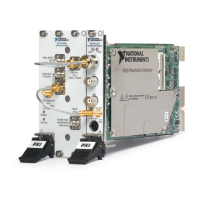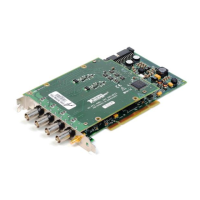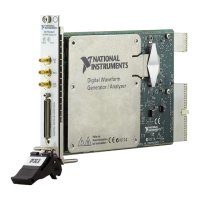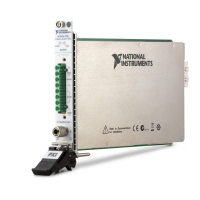Glossary
© National Instruments Corporation G-13 NI USB-621x User Manual
S
s Seconds.
S Samples.
sample counter The clock that counts the output of the channel clock, in other words, the
number of samples taken. On devices with simultaneous sampling, this
counter counts the output of the scan clock and hence the number of scans.
scan One or more analog or digital input samples. Typically, the number of input
samples in a scan is equal to the number of channels in the input group. For
example, one pulse from the scan clock produces one scan which acquires
one new sample from every analog input channel in the group.
scan interval Controls how often a scan is initialized; is regulated by the AI Sample
Clock signal.
scan rate Reciprocal of the scan interval.
sensor A device that responds to a physical stimulus (heat, light, sound, pressure,
motion, flow, and so on), and produces a corresponding electrical signal.
Primary characteristics of sensors are sensitivity, frequency range, and
linearity.
signal conditioning 1. Electronic equipment that makes transducer or other signals suitable in
level and range to be transmitted over a distance, or to interface with
voltage input instruments.
2. The manipulation of signals to prepare them for digitizing.
signal source A generic term for any instru
ment in the family of signal generators.
signal
s Si
gnals are waveforms containing information. Although physical signals
can be in the form of mechanical, electromagnetic, or other forms, they are
most often converted to electronic form for measurement.
single trigger mode When the arbitrary waveform generator goes through the staging list only
once.
single-buffered Describes a device that acquires a specified number of samples from one or
more channels and returns the data when the acquisition is complete.
single-ended inputA circuit that responds to the voltage on one input terminal and ground.
See also differential input.
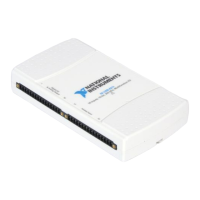
